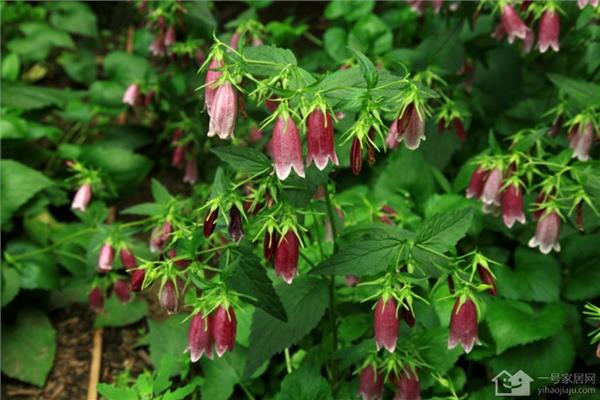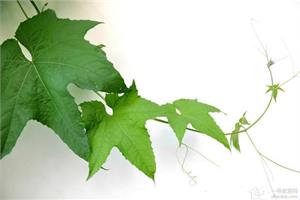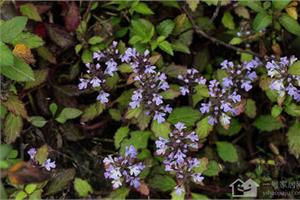The ponytail company basically introduces the morphological characteristics of the ponytail company.
Traditional Chinese medicine has always been emitting sacred light, not only because it has inherited thousands of years of history and culture of the Chinese nation, but also because this superb skill is also regarded as a name card of our country. It is famous all over the world and makes people in other countries have great interest in it. However, it is not easy to learn traditional Chinese medicine at all. If you want to succeed, you must pay a lot of time and energy, especially with so many medicinal herbs, complicated and numerous, which is even more troublesome. Today, I will introduce one of these many, Sargassum.

Sargassum Company
Sargassum is a kind of Thallium multifoliatum and Thallium tabulaeum of Ranunculaceae. Its roots are used as medicine. In spring and autumn, the roots are dug out, the stems and leaves on the ground are cut off, the soil is washed away and dried. Thalassandra multifoliata: perennial herb, all glabrous plants. Underground have transverse go rhizome, unripe a lot of slender root, all yellow, upper part has long branch. Leaves trifoliate or subpinnately compound at middle of stem; leaves up to 28 cm long. Inflorescences paniculate, much branched. Achenes spindle-shaped, 3 mm. 2. Thessalonians on Plateau: It seems to be the last species. Many slender roots grow underground, yellow in cross-section. The stem leaves are more than two times and three times compound leaves.
morphological characteristics
1. The plant is a perennial herb, 60-85cm tall. Rhizomes short, with numerous stout fibrous roots. Stem erect, branched, glandular hairy above. Leaves alternate; petiole 4 cm long, base with short sheath; leaves tripinnate; leaf blade 5- 9.5 cm long; leaflets herbaceous, broadly obovate, elliptic or suborbicular, length and width about 0.7- 1.6 cm, upper part 3-5 teeth, base rounded or shallow cordate, densely glandular hairy, below densely pubescent along veins, reticulate veins not obvious; petiolule 0.5- 1 cm long; hairs on leaf axis 0.2 mm long.
2. Thallus tabulaeformis, perennial herb, 50-120cm tall. All plants glabrous, or sparsely pubescent on upper part of stem and abaxial surface of leaves. Stem erect, branched distally. Leaves alternate; petiole 1-4cm long; Basal leaves and stem leaves wither when flowering, leaves in the middle of stem are 3 - 4 pinnate compound leaves with short stalk; leaves are 9-20cm long, pinnate 4-6 pairs, leaflets thin leathery or slightly fleshy, rhomboid-obovate, broadly rhombic or subrounded, 5-14mm long, 3-14mm wide, apex often acute, base obtuse, rounded or shallowly cordate, 3-lobed, lobes entire or 2 denticulate, upper veins depressed, below by white powder, veins raised, net veins obvious.
3. Thallus baikalis, perennial herb, 45-80cm tall. The whole plant is hairless. Stem erect, branched distally. Leaves alternate; petiole 1-2.5cm long, base with narrow sheath; stipules narrow, membranous; middle leaf of stem is trifoliate, with short stalk; leaf blade 9- 16cm long, leaflet herbaceous, terminal leaflet broadly rhombic, flat rhombic or rhombic obovate, 1.8-4.5cm long, 2-5cm wide, base broadly cuneate or subrounded, 3-lobed, lobes crenate, veins raised on back, reticulate veins slightly obvious.
pharmacological effects
Fetidine has hypotensive effect, and its crude preparation can treat hypertension. Magnoliine, berberine, jatrorrhizine, etc. See Aristolochia, Coptis. Thyssocarpus petalis or Thyssocarpus arrowheadus contain thyssocarpus arrowheadus alkaloid, which has anti-inflammatory, analgesic and cooling effects on animals. Thyssocarpine, thyssocarpine and santaline are contained in Thyssocarpine. They are effective against rat gastric cancer-256 and Lewis lung cancer in mice. Thyssocarpine also has a weak hypotensive effect.
This is only an introduction to one member of the huge army of traditional Chinese medicine, but it is already very complicated. There are many pharmacology that Chinese medicine researchers need to remember, because patients 'lives are in their hands and cannot be careless. Therefore, it is not a simple matter to learn Chinese medicine well. As a medical staff, we also shoulder a particularly heavy responsibility, but difficulties cannot stop us from inheriting the great heritage and culture of traditional Chinese medicine. We need to protect and develop it.
The above is the relevant introduction of this article, I believe you have read this also have a simple understanding, if necessary, you can continue to pay attention to No. 1 home network, to learn more information.
Related
- Wuhan Hospital Iron Tree Blooming Result Was Instantly Frightened by the Gardener Master
- Which variety of camellia is the most fragrant and best? Which one do you like best?
- What is the small blue coat, the breeding methods and matters needing attention of the succulent plant
- Dormancy time and maintenance management of succulent plants during dormancy
- Minas succulent how to raise, Minas succulent plant pictures
- What are the varieties of winter succulent plants
- How to raise succulent plants in twelve rolls? let's take a look at some experience of breeding twelve rolls.
- Attention should be paid to water control for succulent plants during dormant period (winter and summer)
- Watering experience of twelve rolls of succulent plants
- Techniques for fertilizing succulent plants. An article will let you know how to fertilize succulent plants.



